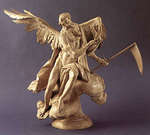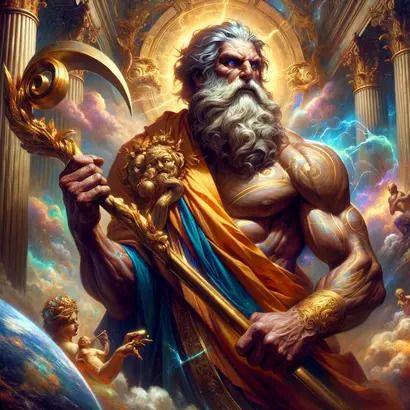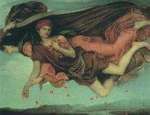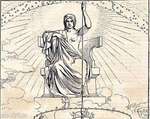
Chronos
Chronos :: The Embodiment of Time
Chronos, distinct from the Titan Cronus, is the personification of time in Greek mythology. His representation as a three-headed serpent, with the heads of a man, a bull, and a lion, symbolizes the all-encompassing nature of time, touching all beings and realms.
Symbolism of the Three Heads
The three heads of Chronos are rich in symbolism. The human head represents intelligence and the rational aspect of time, the lion symbolizes bravery and strength, and the bull head embodies fertility and creation. Together, they signify the diverse influence of time over life.
The Primordial World Egg
Chronos played a pivotal role in the creation myth according to the Orphic tradition. Alongside his daughter Ananke, the goddess of inevitability who also appeared as a serpent, he encircled the primordial world egg. Their movement around the egg led to its division, creating the earth, sea, and sky, a cosmic event that marked the beginning of existence.
Chronos and Ananke
The partnership of Chronos and Ananke is a fundamental aspect of the Orphic cosmogony. Together, they represent the inescapable forces of time and fate, underlining the idea that time is intertwined with the inevitability of events.
Creation of Aether and Chaos
According to Orphic myths, Chronos was instrumental in the birth of Aether (the upper sky) and Chaos (the void). In the silver egg created by Chronos in Aether, the gods Phanes and Hydrus emerged, who were responsible for the birth of the first gods and the entire universe.
Distinction from Cronus
It is crucial to distinguish Chronos from Cronus, the Titan father of Zeus. While Cronus is a figure in the Olympian pantheon associated with the harvest and often depicted with a sickle, Chronos is a primordial deity embodying the concept of time. The conflation of these two figures has occurred historically both by mistake and intentionally due to the similarity in their names.
Chronos in Cultural Context
Chronos' representation in Greek mythology extends into various cultural and philosophical contexts. He is often seen as a metaphor for the relentless, all-encompassing nature of time, and his imagery has influenced artistic and literary works throughout history.
See Also: Ananke, Aether, Chaos, Cronus, Titan
Chronos Q&A
Link/Cite Chronos Page
Written by: The Editors of GreekMythology.com. GreekMythology.com editors write, review and revise subject areas in which they have extensive knowledge based on their working experience or advanced studies.
For MLA style citation use: GreekMythology.com, The Editors of Website. "Chronos". GreekMythology.com Website, 30 Nov. 2023, https://www.greekmythology.com/Other_Gods/Primordial/Chronos/chronos.html. Accessed 26 April 2024.




